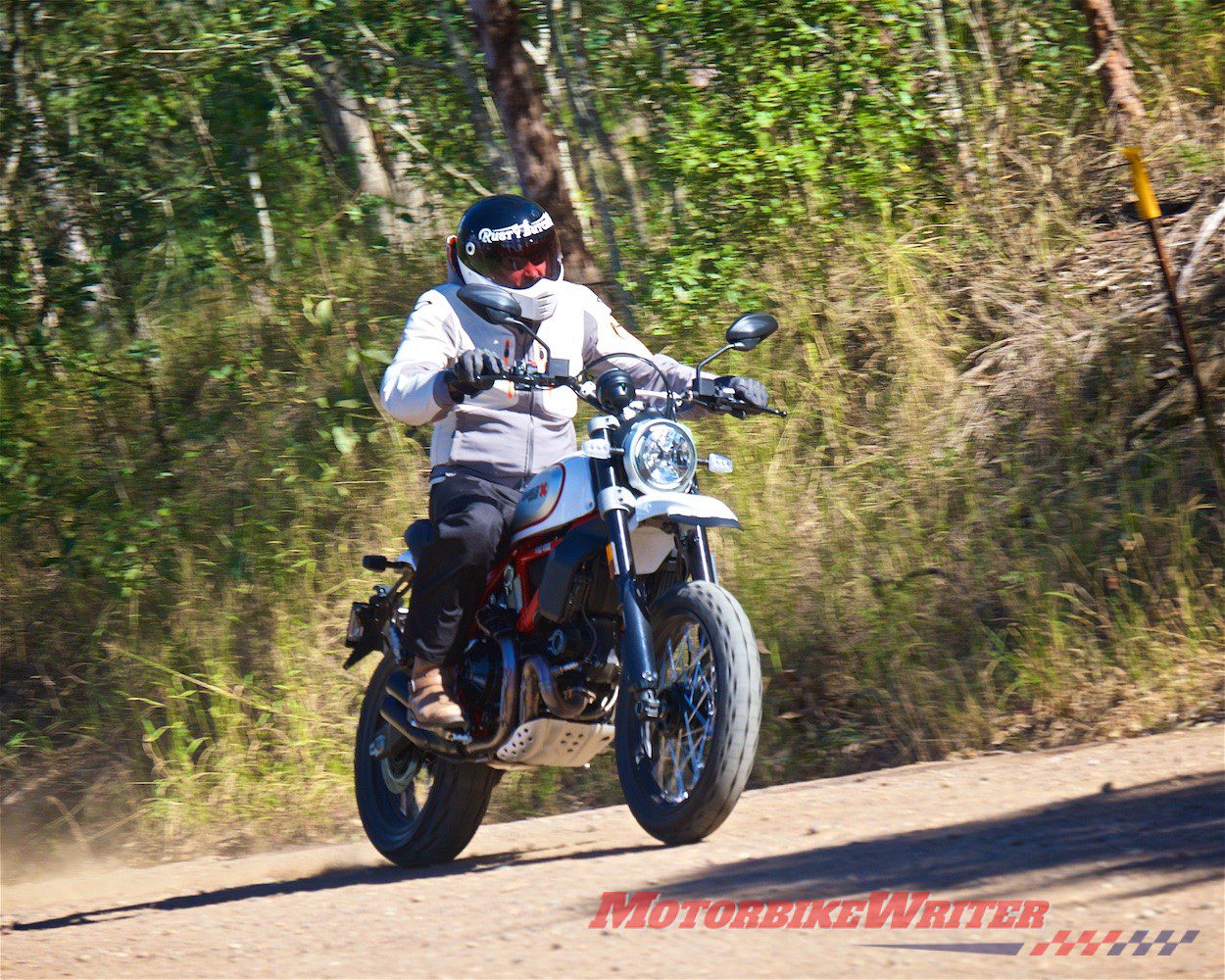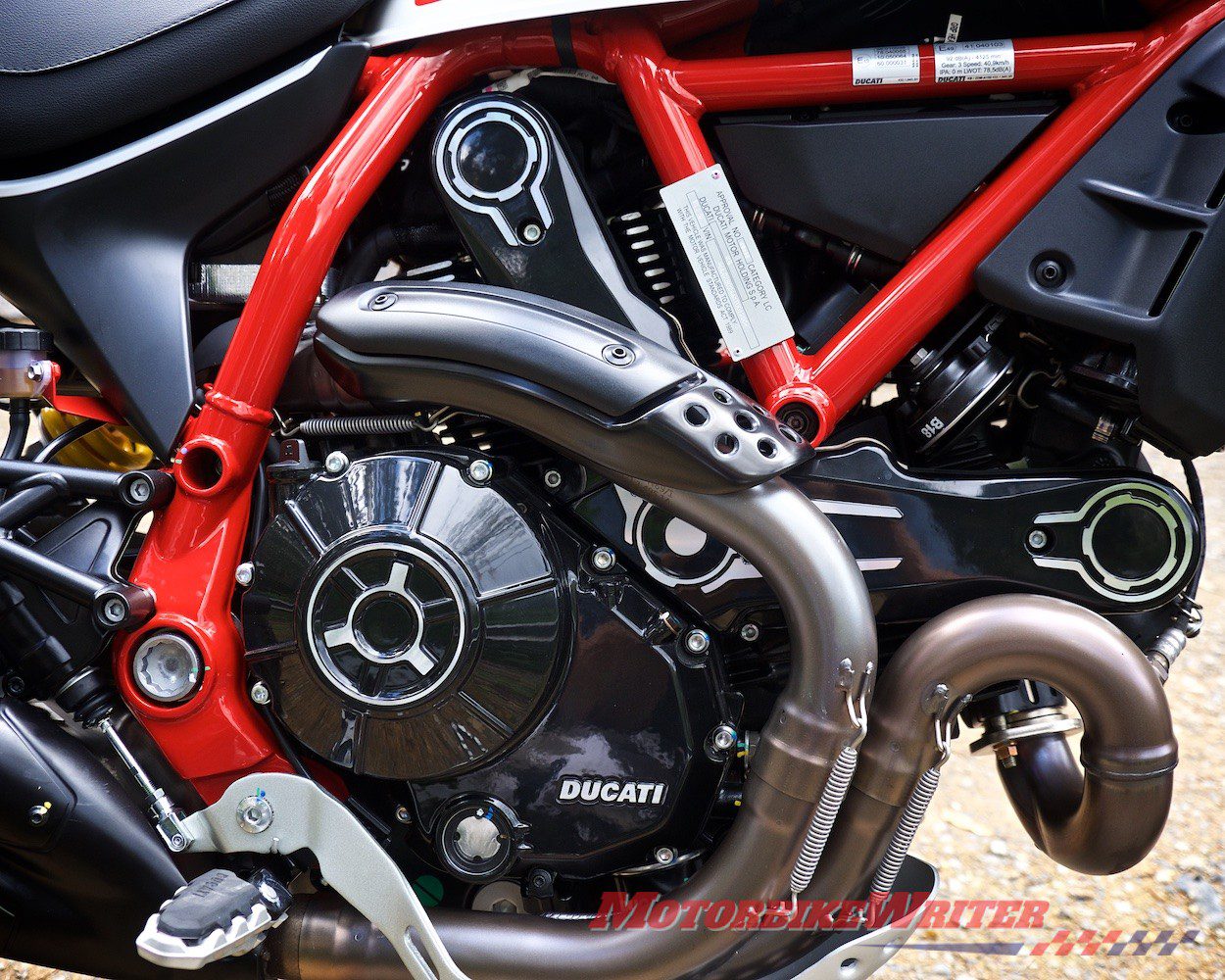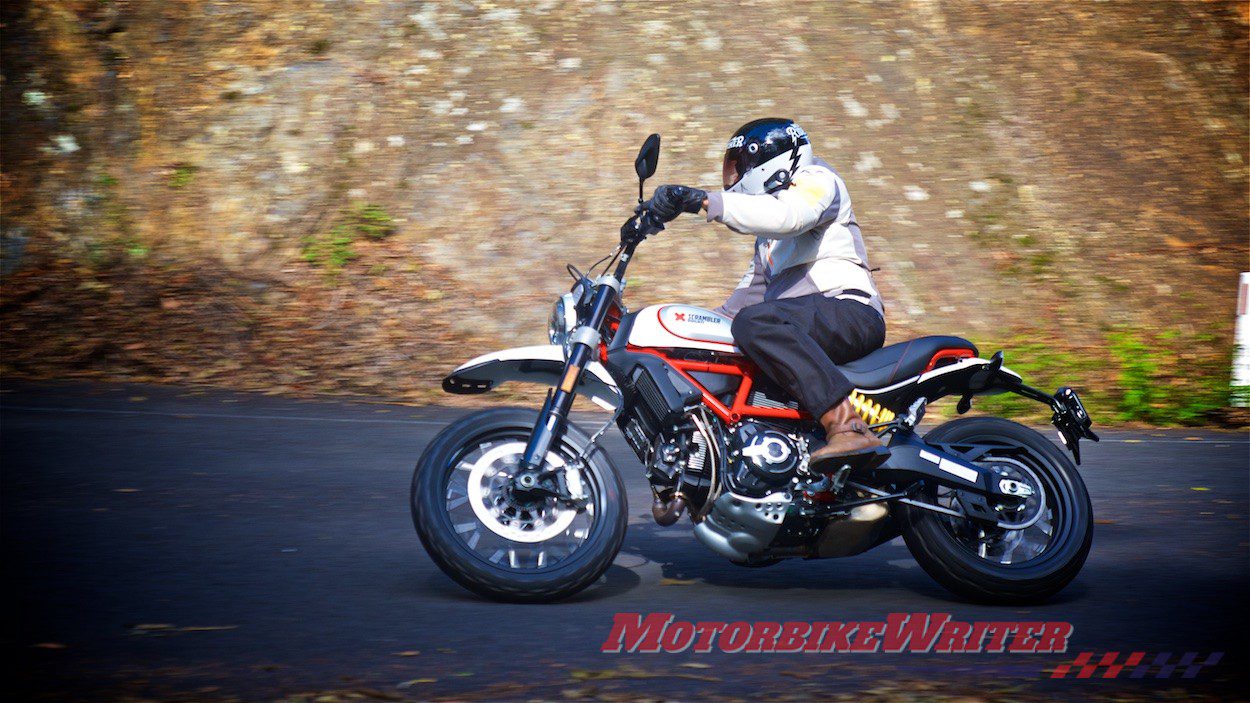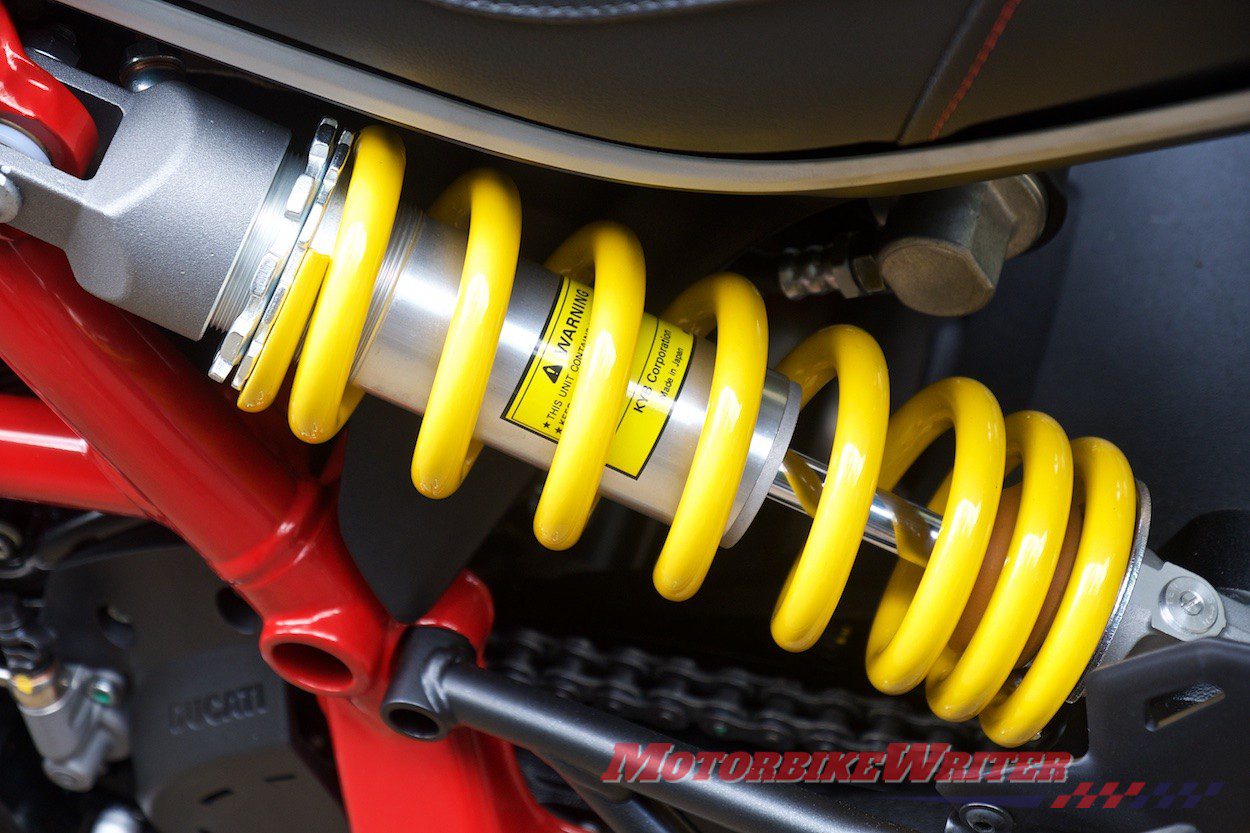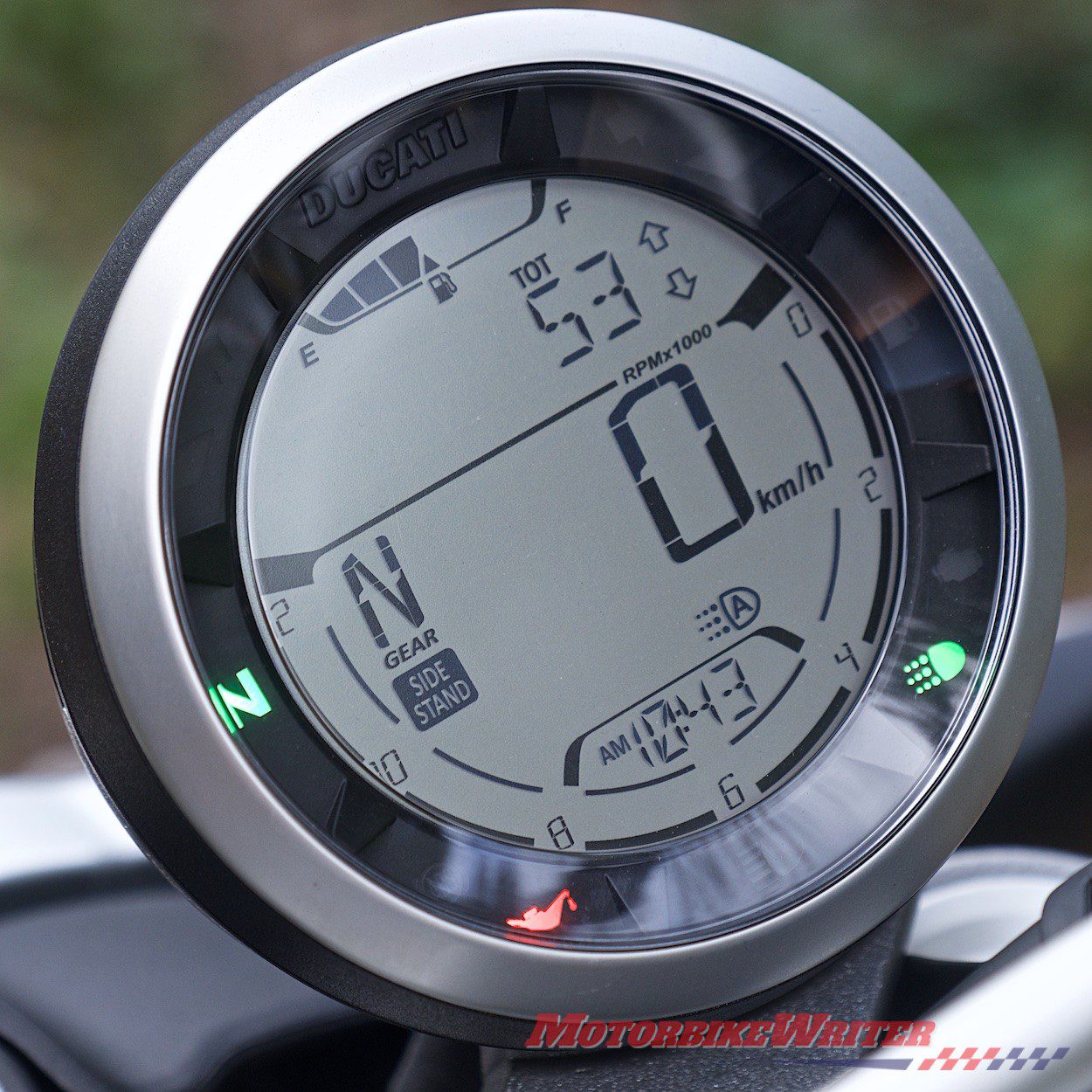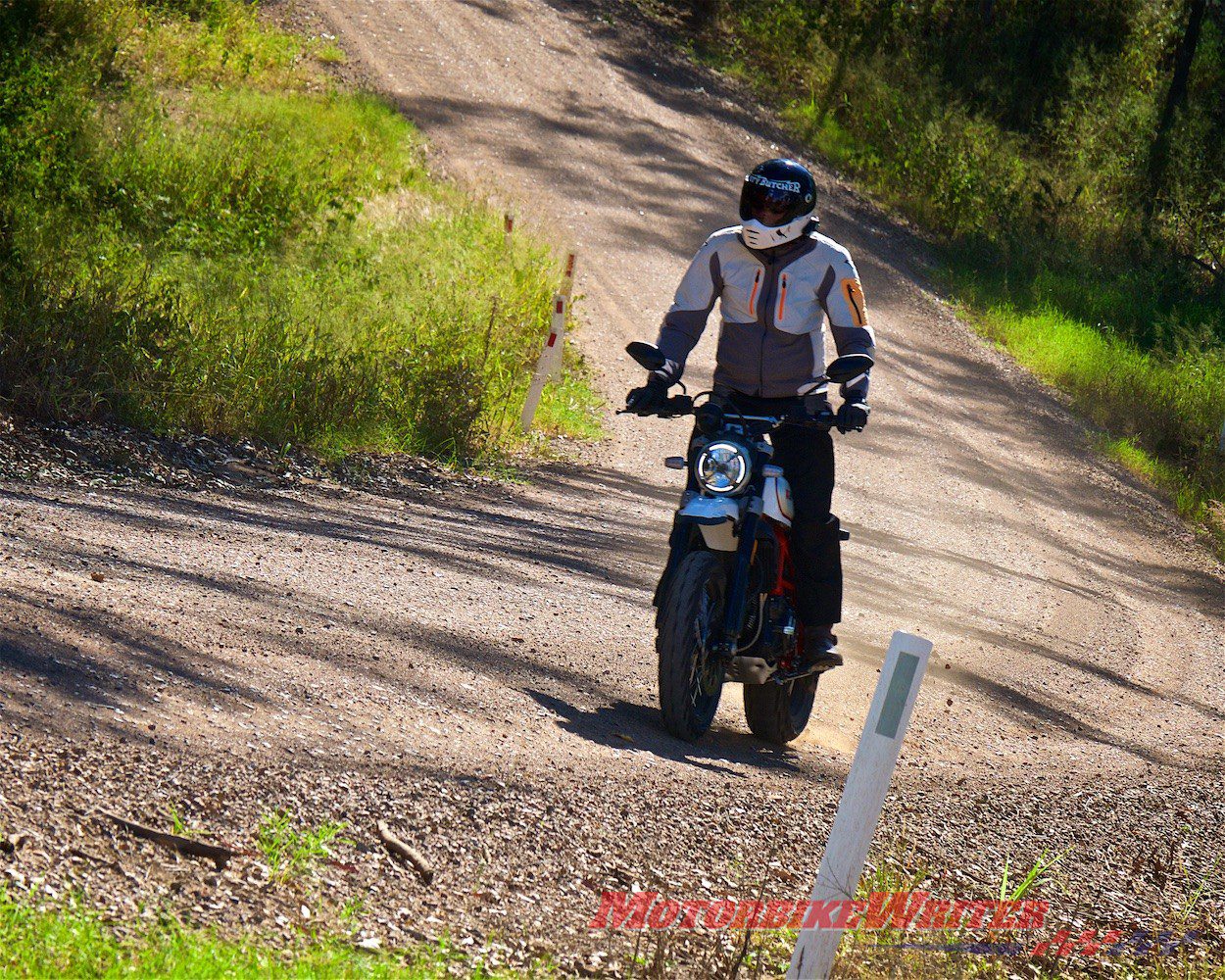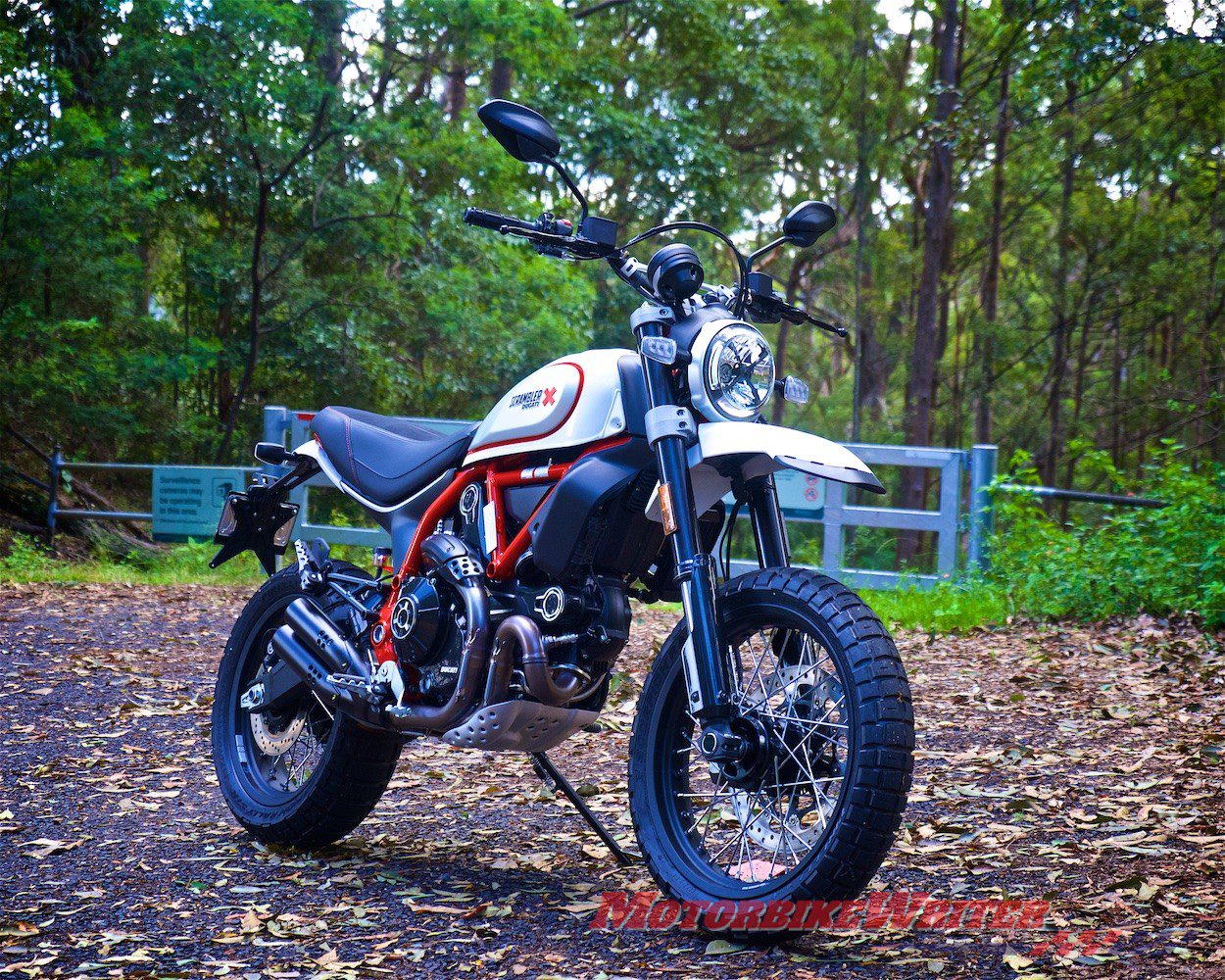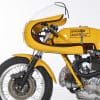The Ducati Desert Sled is the first of the modern scramblers that is actually a capable all-roader.
Many riders criticise the current trend to retro scramblers as not being true to the traditions of a scrambler that is light, low and off-road capable.
When Ducati introduce the Scramblers in 2015 they became an instant hit and are now the top-selling family in the Ducati fleet.
There are now nine in the range, but there have been 18 different incarnations already.
Last year they added the Desert Sled, which is cheekily named after Steve McQueen’s Triumph desert racer. Incidentally the original desert Sled sold at a Bonham’s auction in Las Vegas in January 2016 for $US103,500.
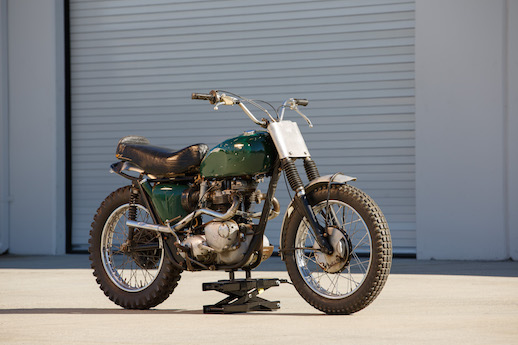
The Ducati Desert Sled is a little cheaper at $19,290 ride away.
It comes with longer-travel suspension, a skinny 19-inch font wheel with knobby tyres, non-slip footpads with removable rubber inserts, motocross-style handlebars and a high front guard which make it more off-road capable.
Road test
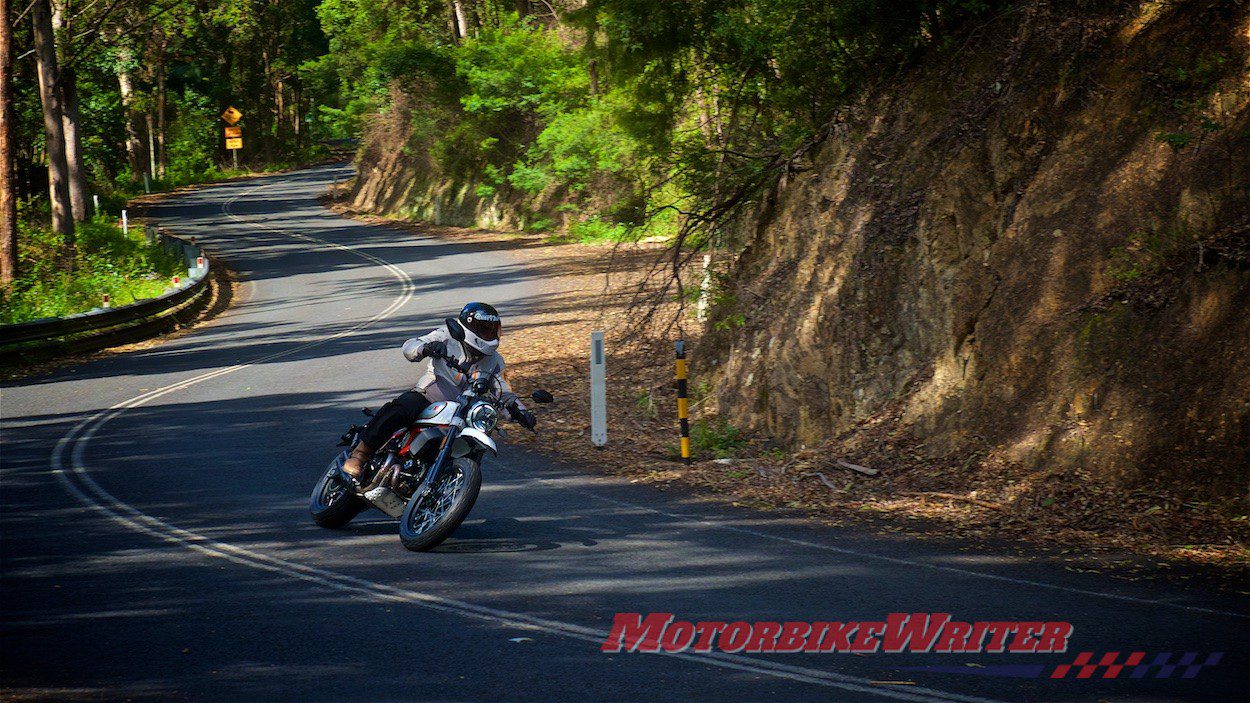
When Brisbane Motorcycles boss James Mutton offered us a ride on a Desert Sled we were keen to take him up on the offer and see if the bike silences the critics.
After less than one year on the showroom floor, the Desert Sled cashes in on a host of important 2019 updates to the Scrambler fleet including cornering ABS, a fuel gauge, a new LED headlight and self-cancelling LED indicators.
The Desert Sled also gets some cosmetic updates such as a red frame, new seat with colour-coordinated stitching and spoked wheels with black rims.
But most importantly it now features an Off Road Riding Mode that allows the rider to switch off the ABS, plus adjustable Kayaba suspension and engine skid pan.
Like the rest of the Scramblers, it’s light and low, but the taller suspension does make the 170kg Scrambler a little higher in the saddle at 860mm.
That’s 70mm taller than the others, but it is such a narrow seat that most people will still be able to get their feet down on the ground. You can also buy an 840mm low seats option.
And the seat and tank are so slim it is a joy to ride standing up when you’re racing through the bush. Just as well as the hard seat is not very comfortable for long highway stints.
Fresh rubber and engine
Our test bike was brand new with only a handful of kilometres on the clock and the knobby Pirelli Scorpion Rally STR tyres not even broken in yet.
The 803cc L-twin from the Monster 796 and 797 is a sweet engine that pulls well from the midrange and buzzes with excitement when you give it some revs.
It produces a healthy 56kW (75hp) of power at 8250rpm and 68Nm of torque at 5750rpm.
We didn’t throttle it during its running-in stage, but it doesn’t really need to be fed redline revs to get plenty of lively response, anyway.
The gearbox still felt a bit stiff and neutral was hard to find and there was the occasional false neutral.
It’s geared a little tall for single-trail off-loading, but it’s fine for most traffic and highway applications.
Despite fresh rubber, the tyres provided plenty of confidence on the tar.
I was able to get some good lean angles straight away with no flop feeling in the cornering despite the 19-inch high-profile front tyre.
Grip was also good and the bike steers precisely, although the front end does get a bit flighty over corrugations and it tracks a little in longitudinal road cracks.
Like most Ducatis with standard suspension it is over-sprung and under-damped, but a heavier rider than my 75kg might find the ride better.
Rough stuff
Once you hit the rough stuff, the stiffer springs make more sense and it rides out the bumps well.
The off-road setting lets you turn off the cornering ABS, but I found the ABS actually works really well on a loose-gravel road, so I left it on.
Switching it off is a bit of a chore and you have to be stopped to do it.
When you switch off the engine and switch back on again, it defaults to ABS on.
The wide 170mm rear tyre is one of the only drawbacks for dirt roads. It has resasonable go and stop grip, but it makes the bike very taily in corners.
The fuel gauge is a welcome addition to the single digital instrument pod, but it’s a messy and difficult to read display.
Also, the low fuel light comes on as soon as the gauge drops under half way. That’s annoying as you probably have more than 100km of range left in the 13.5-litre tank.
I also found the mirrors too high and wide and line up with the mirrors on SUVs andantes when lane filtering.
They also have a strange shape with a cutout that diminishes the rear view just where you need it.
Conclusion
The Desert Sled definitely silences the critics of modern scramblers.
It’s quite capable in the bush and feels light and low enough for even notices to manhandle down a gnarly track.
We suspect a Desert Sled version of the Scrambler 1100 may also be waiting in the wings to take on the very capable off-roading Triumph Scrambler 1200.
Ducati Scrambler Desert Sled
|
Engine |
803cc, V-twin, 4-stroke, air-cooled |
|
Prices |
$19,290 ride away |
|
Suspension |
Front: Kayaba 46mm fully-adjustable upside down front forks Rear: Side-mounted rear shock adjustable for pre-load, compression and rebound damping |
|
Power |
56kW @ 8250rpm |
|
Brakes |
Front: Single 330mm disc, Brembo four-piston caliper Rear: 245mm rear disc. Brembo single-piston caliper. |
|
Tyres |
Front:120/70 x 19 Rear: 170/60 x 17 |
|
Seat height |
860mm (33.9in) |
|
Weight: |
193kg dry/209kg wet |
|
Fuel capacity |
13.5 litres |
|
Bike supplied by |


